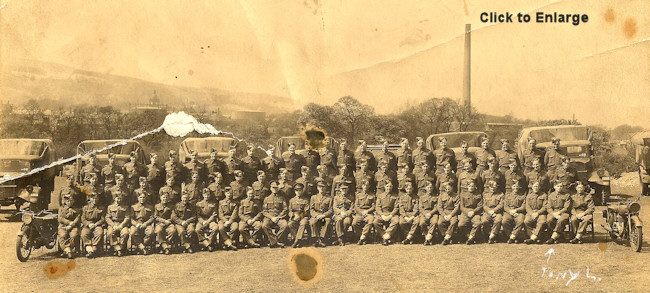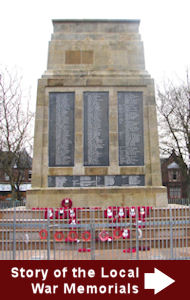The Vale in the Wars
Introduction
The 20th century witnessed the two deadliest conflicts in the history of mankind, and the first two wars which were fought by their participants in many parts of the globe. There was some sort of military action in all of the continents in either or both of the wars, and although no action of any sort took place in South America, some of the countries there, such as Brazil, took part on the Allied side.
Valemen and women went off to serve in many different theatres of war including the war at sea and many did not return. Many of those that did return were permanently scarred by wounds, by having been prisoners of war and by the trauma of what they had experienced.
At home everyone was impacted by the war, and many people also served one way or another – the ethic of service, that “we’re all in this together” is a lasting impression, particularly from WW2. All sorts of divisions were put aside for the duration. It certainly changed nearly everyone’s life and those who are old enough to remember have some stories from that time that have always stuck with them.
It is impossible in a web-site such as this to do justice to all that happened to Vale people in the First World War, which lasted from 4th August 1914 until 11 November 1918 and the Second World War, which lasted from 3rd September 1939 until 8th May 1945 in Europe (V-E Day) and 15th August 1945 in Asia (V-J Day). Apart from anything else, many of the stories died with the participants and their children while many mementoes and recollections just disappeared over time. However, there is still quite a body of information out there in letters, documents, photographs, written recollections, web-sites such as Secret Scotland, newspapers, oral tradition and memorabilia such as medals, badges, even bits of planes and vehicles.
We would like as much of that as possible to be documented before it too disappears and invite contributions from anyone who has anything they’d like to say. Normally we like to maintain a chronological approach to content, but that’s not realistic with a subject as large as this. There are many subjects which span the length of the wars such as Identity Cards and Ration Books, and those we will place when they are introduced. However, content is more likely to be episodic e.g. the Clydebank Blitz. We will post episodes as we receive them and will try to maintain a very broad chronology in the presentation of the episodes. We shall also divide the content into WW1 and WW2.
WORLD WAR 1
The main content for World War One is available through the WW1 introduction pages, These are several pages and documents which link to further, more detailed content on specific incidents and situations involving people from the Vale. Shorter contributions from various people on both wars are listed under the heading Contributions on this page.
World War 1 and the Vale of Leven main intro page >
Overview of the impact of World War 1 on the Vale >
The Men who marched away and Renton's Roll of Honour >
Vale of Leven Roll of Honour Article >
(This is a large document of close to 100 pages that is available as a downloadable PDF. It includes individual stories of many local soldiers and a link to the actual Roll of Honour with many of their names listed. You may even be able to find a relative on this list.)
The content below consists mainly of contributions by various people with local connections and we would be grateful for any similar contributions that you can provide. If you have stories or pictures about the activities and experiences of family members during the wars that you would like to share with our website readers we would be happy to publish these here. Get in touch >
Contributions
29 December 2015
The story of Peter McLean, Bonhill, Private, Seaforth Highlanders. We’re grateful to Catherine Cameron for providing this account of her father’s service in the Seaforth Highlanders during WW1.
15 October 2015
Harry Friel from Alexandria was killed serving with the US Army in 1918. Our thanks are due to his Nephew, David, who contacted us with his story.
14 November 2014
This is a link to an article by Harry Summers about the Jackson Family from Lennox Street in Renton who lost two sons in WW1. These were the older brothers of Wembley Wizard, Alex Jackson, who himself was killed serving in Egypt in 1946. The information provided here was contributed by Elizabeth Wynne and Iain Gillies who are great niece and great nephew of Alex, James and Tom Jackson.
3 April 2014
We have a copy of the diary of Private John Hogg of Alexandria, who was sent off to the Khyber Pass in 1917 where he took part in the Third Afghan War. This is in downloadable PDF format.
We also have the very interesting diary of Sir Iain Colquhoun the laird of Luss, who fought bravely on the Western Front, was wounded and decorated, but was nonetheless court-martialed for being judged to have observed a Christmas Truce in December 1915.
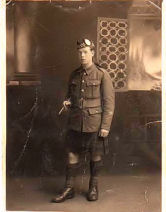
We received some interesting images and documents from local man Eddie Geoghan. These are related to his grandfather's time in the army during WW1. Eddie kindly let us scan these for the website.
The documents include a letter sent from the trenches with a graphic account of what it was like to be there during that terrible conflict.
"How any one of us lived to come out of such a battle God only knows. They were lying dead in heaps both British and Germans and anywhere you looked you were looking at wounded and dead men and animals."
12 October 2011
We received the following email from Anne Parkinson, whose great uncle was killed in action in France in 1918.
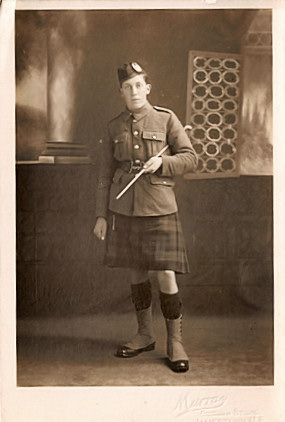 "I have enjoyed using your website for some family research (Gellatly family, Jamestown, Alexandria and Balloch), and chanced upon your section for the First World War. We have the original letters sent home by my late father’s Uncle, Andrew Brown Gellatly, Private 131432, Machine Gun Corps, 25th Battalion, who was killed in action on 18th April 1918. These are his last three letters home, and the last one describes a fine day in France , Easter 1918, and he muses that if it should be the same in Scotland then ‘I am sure Balloch would be very busy’. Andrew’s parents were possibly living at *Port Royal, Balloch, certainly his father, James Gellatly, died there a few years later.
"I have enjoyed using your website for some family research (Gellatly family, Jamestown, Alexandria and Balloch), and chanced upon your section for the First World War. We have the original letters sent home by my late father’s Uncle, Andrew Brown Gellatly, Private 131432, Machine Gun Corps, 25th Battalion, who was killed in action on 18th April 1918. These are his last three letters home, and the last one describes a fine day in France , Easter 1918, and he muses that if it should be the same in Scotland then ‘I am sure Balloch would be very busy’. Andrew’s parents were possibly living at *Port Royal, Balloch, certainly his father, James Gellatly, died there a few years later.
< Download letters >
I have enclosed a photo of Andrew. Could this be of interest to your website, and are the scans of good enough quality for your purposes?
My Grandfather, Edward Peter Gellatly also served in the Machine Gun Corps and was awarded the MC at the battle of Cambrai. His exploits are described in Stuart Wilson’s excellent book, Answering the Call, Auchencairn and the First World War’. After the war, Edward became headmaster of the primary school in Auchencairn. My Grandfather, born and brought up in The Vale, wrote two poems which have survived from his time as a soldier. They are quite lengthy, but may be of interest, and I could scan them and send them on to you.
My Grandfather married Isabella Forbes, of Jamestown. Her grandfather married Isabella Hamilton of Levenbank House.
I have found researching the local family history a real pleasure, made all the more exciting by accessing information from your web site.
Many thanks,
Anne Parkinson
*Port Royal was a small cottage on what is now the Drymen Road in the area opposite the entrance to Mollanbowie Estate. There is a reference to this in James Barr’s excellent book “Balloch and Around”, which can be downloaded from the website here, http://www.valeofleven.org.uk/docs/BallochandAround.pdf.
NOTE: It is interesting that Private Gellatly and Private Edward Malloy referenced in the preceding article seem to have had their pictures taken on the exact same spot but it is likely that the army photographers back then used a common backdrop.
12 October 2011
Hi Bryan,
Thank you for your response, and it was good to hear also from Harry? I have pleasure in sending scans of my Grandfather’s two poems. I shall also forward some photos of him during WW1.
My Grandfather, Edward Peter Gellatly, has an autobiographical section about him in Stuart Wilson’s book, ‘Answering the Call, Auchencairn at War’ and we have quite a collection of his papers left to us by my father. He grew up in Balloch, his father , James Gellatly, worked on the railways. He attended Bonhill Primary and the Allen Glen, Vale of Leven Academy?. Then he enlisted with the Argyll and Sutherland Highlanders in Nov 1915, served as private 60691 before transferring to the Machine Gun Corps in October 1916. Early in 1917 he was promoted to Lance Corporal and I see from this poem that he signed it L/CPl 15012. By early 1918 he had been promoted to Sergeant and he finished the war as an instructor before returning to the teacher training that he had begun before the outbreak of war. He qualified with an M.A. from Glasgow University and taught first at a tiny school near Newton Stewart (Stronord), then Auchencairn, and latterly in Glasgow.
I was delighted to see my father’s uncles letters on your web site and the photo. Thank you. I hope that they are of interest to others, and should they bring any response I would be very interested to learn more.
Best wishes
Anne


![]()
![]()
![]()
The images above are of Edward Gellatly at Bonhill School and at war.
Click on these to enlarge in a new window.
World War 1 Poetry
As mentioned above, Anne Parkinson did send us her great uncle's poems. Graham Lappin had already been collecting local WW1 poetry so he compiled some of these along with Anne's and we have made these available for download.
"In a major realignment of the nation’s volunteer forces in 1908, the Dumbartonshire Rifle Volunteers were re-organized as the Ninth Battalion Princess Louise’s Argyll and Sutherland Highlanders, a territorial unit of the regular army. The battalion was composed of eight companies; Helensburgh (A), Kirkintilloch (B), Dumbarton (C), Milngavie (D), Bonhill and Jamestown (E), Alexandria and Renton (F), Clydebank (G), and Yoker (H).
At the outbreak of World War I, the Battalion assembled in Dumbarton and on Tuesday, August 11th, left by train for Bedford. The poetry of this early period of the war reflects the patriotic fervour, urging young men to join-up. Duncan Mathieson was a strong contributor as also was G.Q. in Canada who hearkens back to the glory days of football in Renton. "
The poems can be downloaded as a PDF here.
25 November 2012
We are grateful to Jim and Sheila Biddulph for providing the web-site with the story of Sheila’s uncle, John McDougall Robertson, who was only 18 when he was killed in France in July 1918. More Here >
WORLD WAR 2
Vale of Leven Academy World War Two Memorial - A Sorry Tale
This is an article by Harry Summers about the missing WW2 memorial that was once located in the original Vale of Leven Academy. View >
The Balloch Navy
Introduction
An account of the “Balloch Navy” was written by Ian Lynn whose grandfather Henry was one of the founders of the boat-hiring and cruise traditions at Balloch and whose father Tommy owned the yard on the east side of the Leven to the north of Balloch Bridge from about 1911 until his death in 1947. Ian worked in the yard at the outbreak of WW2 and this is his recollection of the formation of a small Royal Navy unit to patrol Loch Lomond in the summer of 1940. It was written in June 2005 when he was 85 and sent by Ian from his home in New South Wales, Australia to Graham Hopner of Dumbarton Libraries who has very kindly made it available to the web-site.
The illustrations of the cabin cruisers were done by Ian himself. The Cignet which he had to tow down to Balloch had first appeared on the Leven as John Sweeney’s first steam launch in the 1890’s. There are two photos in which it almost certainly appears in its early days as a steam launch – either on its own sailing on the Loch or one of the three on moorings just to the north of to-day’s Humane Society’s boat shed. Unfortunately there is no identification for any of these launches in these photos which come from Alan Brown’s excellent book Loch Lomond Passenger Steamers.
Similarly, the photo of Lynn’s yard in the 1930’s shows both the Glen Fruin II (which towed the Cignet) and Glen Douglas II, but it’s impossible to tell which was which from that distance. The slipway is in the far background close to the White Dyke and very close to where the present slip is. The photo of Tom Lynn – “Faither” or the “old man” in Ian’s story shows him a very characteristic pose holding a catch of salmon which had been landed at the yard to be weighed in the 1930’s. Until the yard closed it was one of the few places on the Loch where fish could be weighed for the Loch Lomond Angling Improvement Association’s records.
In 1940 the authorities were quite right to take the threat of a potential German landing on Loch Lomond seriously. The attacks in the Low Countries and in Norway had shown that the Germans were quite capable of doing the unexpected, especially with aircraft. Besides in WW1 a German who had been sent to spy on the Arrochar torpedo range was arrested in Tarbet Hotel and later executed in London. So there was plenty of evidence to urge action on the Loch.
When Rudolf Hess parachute landed at Eaglesham, he was taken to the military hospital at Buchanan Castle Drymen. As a precaution the Balloch Navy was deployed to patrol the Endrick Bank and the lower stretch of the River Endrick – but that’s another story.
Somewhere out there is a photograph of a patrol cruiser complete with a machine gun. If we get a copy, we will load it here.
Apart from some changes to spacing and paragraphs, this account is exactly as Ian wrote it.
An Eventful Time
After my father died, I came across a typewritten copy of a newspaper article that had been sent to his mother by my aunt. I’ve no idea where it was published but it would appear to be in the local paper, the Lennox or perhaps the Glasgow Herald, most likely in the last year of the War. I’m not sure what prompted it but I suspect it was a public relations exercise to give some news to the families of soldiers who had been abroad on active duty for three or in some cases four years.
Alexandria Soldier Likes “Eventful Life.”
By a Military Observer.
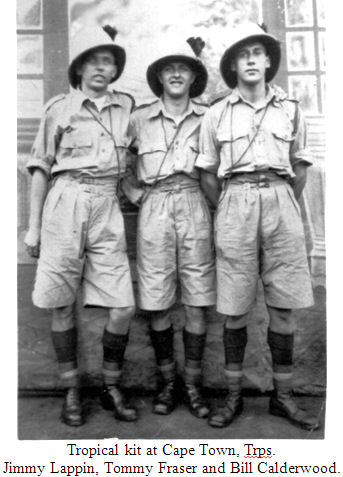 "Cpl. J. Lappin, of 17 Govan Drive, Alexandria, gave up his job as an electro-plater to join the Cameron Highlanders in March, 1940, and then volunteered for the Scottish Commandos. This took him to Syria, where there was a brief but stiff campaign, and later he became a member of the Special Service, doing commando work in the Western Desert. His present station is in the Aegean. “They put up quite a bit of resistance in Syria,” he said, “but we managed to get well in and capture a number of prisoners.
"Cpl. J. Lappin, of 17 Govan Drive, Alexandria, gave up his job as an electro-plater to join the Cameron Highlanders in March, 1940, and then volunteered for the Scottish Commandos. This took him to Syria, where there was a brief but stiff campaign, and later he became a member of the Special Service, doing commando work in the Western Desert. His present station is in the Aegean. “They put up quite a bit of resistance in Syria,” he said, “but we managed to get well in and capture a number of prisoners.
But after the campaign was over, the French were very friendly. When my unit was split up I went with the part that joined the Special Service. We used to patrol the desert and interfere with enemy supply columns and so on. One day we had a little trouble near Alamein. We were trying to get out. We managed to crowd everything we had onto three very over-burdened trucks and made off southwards. By great good luck we struck an empty British convoy, joined them, spread out the loads and got to the Siwa Oasis. We got back after a long desert journey.”
When this unit was disbanded, Cpl. Lappin joined the Special Air Service. He did not go to the desert after that but was given office work. He quite liked the change. He served in Egypt and then in Palestine for a year on administrative work, but during this period took a parachute-jumping course.
“I wouldn’t say I liked it, but it isn’t too bad,” he says. “It was exciting at first. I quite like it here in the Aegean,” he continued,” but there isn’t much to do off duty. I must say I prefer the eventful life when I can have a choice, and now and then I have enjoyed that in my Army Service.”
Jimmy joined the Cameron Highlanders and after basic training in Nairn and was billeted in the fish-market in Wick. After the evacuation of Dunkirk in June 1940, the call went out for volunteers for Special Service—Commandos. Jimmy applied and was accepted and after a week’s leave he joined the new unit, 11th (Scottish) Commando, at Netherdale Mills in Galashiels. The only distinguishing feature of the new unit was the addition of a black hackle to their regimental cap-badge. The Commando marched across Scotland to Ayr then by train to Fairlie and boat to Lamlash in Arran where they completed their strenuous training for combined operations under live-fire conditions.
At the end of 1940, they sailed from the Clyde for the Middle East, round the Cape of Good Hope. The Commando was initially slated to attack the Italian island of Pantalleria, but events were moving swiftly as the Germans moved first to invade Greece, then Crete, and made advances in North Africa.
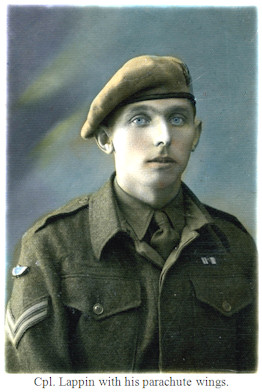 The 11th (Scottish) Commando was used in the campaign to invade Vichy French Syria and secure the northern approaches to Palestine in June 1941. They landed from the sea behind the enemy line at the Litani River achieving their objectives but at a cost of a third of their strength. (The full story is available as Black Hackle or Litani River.) The casualties could not be replaced and although the remnant of 11th (Scottish) Commando was retained for an attempt to capture Rommel in November, many of the commandos were dispersed or combined with other raiding forces.
The 11th (Scottish) Commando was used in the campaign to invade Vichy French Syria and secure the northern approaches to Palestine in June 1941. They landed from the sea behind the enemy line at the Litani River achieving their objectives but at a cost of a third of their strength. (The full story is available as Black Hackle or Litani River.) The casualties could not be replaced and although the remnant of 11th (Scottish) Commando was retained for an attempt to capture Rommel in November, many of the commandos were dispersed or combined with other raiding forces.
At the end of the year, Jimmy found himself in A Squadron Middle East Commando who were first sent to Syria to train the local population in guerilla warfare as it was feared that success in the invasion of Russia would bring the Germans through neutral Turkey to threaten the middle-east oil fields and the Suez Canal. In addition to working with the local tribesmen, they constructed observation posts out of canvas to look like boulders and prepared positions for an insurgency.
In April, after Rommel’s advance, they were brought back to Egypt to conduct raids on the Axis supply lines in conjunction with the Long Range Desert Group into which they were eventually absorbed. This raiding continued until Montgomery’s advance in late October and the end of the North Africa Campaign at the beginning of 1943 but by this time Jimmy had transferred to the S.A.S. and was assigned clerical duties at their base in Egypt
In January 1943, David Stirling, the founder and driving spirit behind the S.A.S was captured and with the end of the desert campaign, the S.A.S was reorganized as the Special Raiding Squadron based in Palestine under the command of Blair Mayne. Part of the S.A.S. training involved parachute jumps, something at first sight Jimmy didn’t really care for but there was plenty of clerical work to do as the unit expanded, re-equipped, and added heavy mortar sections in preparation for the invasion of Sicily and Italy in July 1943. For a time they even moved to the Lebanon mountains to train in skiing. Eventually Jimmy went through the parachute training that allowed him to go back to operational duties.
Jimmy remained in the Aegean for the remainder of the war, working with the Greek Sacred Heart Squadron and other units. He was active in the Greek Islands, tying up German resources so they could not be used elsewhere, and was mentioned in despatches for distinguished service as recorded in the London Gazette in October 1945.
Graham Lappin
The Lea Brae Accident
The worst single day’s loss of life involving Vale servicemen in WW2 was in September 1943 and occurred not on some far-flung battlefield but right on our own door-step – the Lea Brae on the road between Dumbarton and Cardross. As in many cases in WW1 the worst affected community was in Renton because of the 5 soldiers killed, 4 came from Renton as did 7 of the eight men who were taken to hospital.
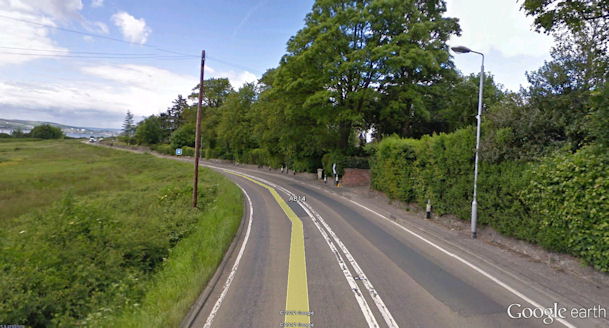
They were all members of the Home Guard and serving in 71st (Clyde) Heavy Anti-Aircraft Battery (HAA) which at that time manned anti-aircraft defences located in Cardross and Helensburgh. These were not the archetypal Dad’s Army type of part-time soldier because by this stage in the war all of Britain’s AA defences had been entrusted to the Home Guard. Although most of the soldiers who manned these Heavy AA defences lived at home and many had day-time jobs, they were serving as virtually full-time soldiers manning the guns all night. This had many advantages to the Army - it not only freed up other soldiers to prepare for the coming European campaigns it also lessened the burden of providing accommodation for the HAA soldiers all across Britain.
On the evening of 15th September a group of them from Renton and Dumbarton had been picked up by an army open-backed lorry covered by a tarpaulin and were being driven towards Helensburgh when the lorry was struck a heavy vehicle coming in the other direction which was carrying an overhanging structure of some sort. Apparently it was dark when the collision occurred and of course the blackout was in operation, with all vehicle headlights dimmed accordingly. The driver of the Home Guard lorry would not have been aware of the danger presented by the approaching vehicle of which he would not have had a clear view.
In the collision 5 men were killed and 17 were injured, 8 of whom were taken to hospital. All of those killed or taken to hospital had been travelling in the soft-sided Home Guard lorry. Those killed were:
John Totten, aged 25, Beechwood Terrace, Dumbarton
Archibald McIntyre, Lennox Street Renton
David Kelso, aged 25, Carman Road Renton
James Rosenburg, aged 22, Alexander Street, Renton
Hugh Copeland, aged 28, Main Street, Renton
The eight men who were detained in hospital were:
David Baird, Hall St, Renton
Hugh Laws, Dumbuck Crescent, Dumbarton
A Robertson, Stirling St Renton
Robert Compton, Main Street Renton
William Montgomery, Carman Road Renton
Peter Montgomery Carman Road Renton
John Munn, Stirling Street Renton
William McMillan, Tontine Park Renton
As can be imagined the deaths and injuries caused a great deal of shock and grief in the area. Unusually for a war-time incident involving soldiers on active service, the Lennox Herald carried an account of the accident.
A Story of the REME and Dillichip Workshops
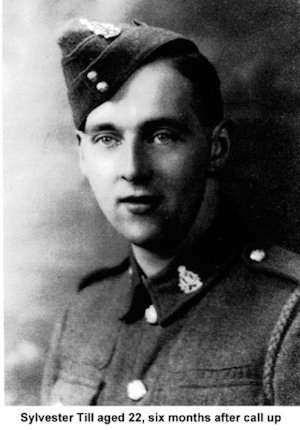 An interesting little story developed recently when we found a link to a book on the Google Books website. The book (currently out of print) covers the wartime experiences of an English soldier in the nascent Royal Electrical and Mechanical Engineers or as it is better known, "The REME". The soldier was Sylvester Till. After being called up during WW2 he was sent to Scotland to work in the Dillichip Works. This was in 1941, when the works had been converted to an army workshop.
An interesting little story developed recently when we found a link to a book on the Google Books website. The book (currently out of print) covers the wartime experiences of an English soldier in the nascent Royal Electrical and Mechanical Engineers or as it is better known, "The REME". The soldier was Sylvester Till. After being called up during WW2 he was sent to Scotland to work in the Dillichip Works. This was in 1941, when the works had been converted to an army workshop.
At first the soldiers had to stay in Bell tents but eventually a proper camp of Nissen huts was built. The camps were located in the field on the right of the back road to Dumbarton, just beyond Dillichip Terrace. Some of you may remember the camp, which was used to house homeless people for several years after the war. The Dillichip Close and Strathleven Park housing developments were later built on the site.
Sylvester, who has since passed away, wrote a book about his experiences, which was published in 2007. It was clear that despite the harsh regime he developed some affection for Bonhill and the Vale of Leven. He made lifelong friends here and returned several times after the war.
Towards the end of the excerpt below he mentions one of his friends, Joe Lickrish, a soldier from Stirling who married a local girl, Betty McPherson. We recognised these names so we got in touch with Joe and Betty's daughter, Beth Baxter, who lives in Balloch.
Beth told us that Sylvester and her late father, Joe became lifelong friends. This was nothing to do with the book's subject so it is not covered there but after the war Joe and Betty regularly visited Sylvester and his wife Dolly at their home in England. These visits were also returned when Dolly and Sylvester came up here to allow him to revisit his old haunts.
Beth provided us with the picture below of her mother and Father with Sylvester and Dolly. This was taken a few years ago during one of their visits.
Memories of The Royal Electrical & Mechanical Engineers WWII: Personal Account 1939 to Demob August 1946 by Sylvester Till
After about six weeks I was sent with about fifty other chaps to Stirling, Scotland. It was a Saturday when we left Gopsall Hall for Ashby de la Zouch railway station. We arrived at Glasgow Central Station about 7pm and had to change stations to Buchanan Street Station. The Corporal in charge of us didn't know where Buchanan Street Station was, however, we had several Scots lads with us. One said he knew the way so the Corporal put him in the front rank to show us the way.
After marching around for about an hour in Glasgow on a Saturday night the Scots lad said he was lost, so it was like the song, “I belong to Glasgow”.
After several enquiries from civilians we arrived at Buchanan Street Station at about 9pm. When we arrived at Stirling at about 9.45pm we were tired out. We were then taken in trucks to a camp made up of wooden huts. This was not far from Stirling Castle. On the Sunday our documentation was sorted out. On the Monday we had to go to Stirling Castle for a medical inspection then it was back to camp and into workshops. I remember on a clear day we could see the Firth of Forth Bridge in the distance from our camp.
I was only at Stirling for two weeks before being sent with twelve other men to a little place called Bonhill, about three miles from Dumbarton and about three miles from Balloch at the foot of Loch Lomond. In between Bonhill and Loch Lomond was a little place called Alexandria.
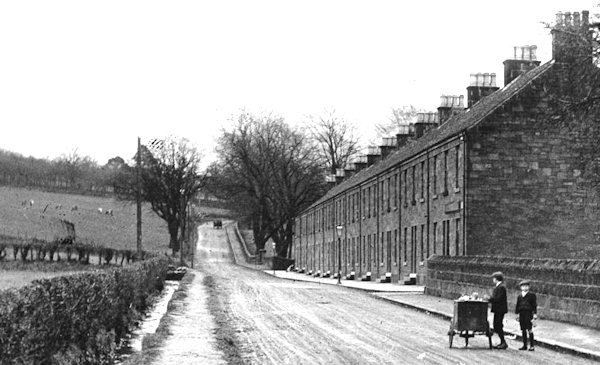
This is Dillichip Terrace before the war.
The camp was located to the right at the top of the hill in the background.
Our camp was situated just outside Bonhill on the back road to Dumbarton, in a field sloping down to the River Leven. We were now in bell tents again and I remember the names of the men, Ernie McMurdy from London. Ernie Palmer from Great Yarmouth, Tom Sykes from Somerset. George from Droylesden, Manchester, and me from Freckleton. We were all about 21 or 22 and all either joiners or motor bodybuilders. Ernie Palmer was the youngest at nineteen and the tales they told when they came in at night about their experiences with the local girls I wouldn't repeat.
I remember them all very well, especially George. He was the smallest of us all and what he daren't do wasn't worth doing. He always overstayed his leave by at least a day or two. Of course, when he did turn up he was always on a charge, absent without leave, and he usually got about three days jankers confined to barracks, but he said it was worth it for another day at home.
He always had some good tales to tell after going out with some girl. One night when he came in the tent Tom Symes said, 'What have you been up to tonight George?'
George said. 'I met up with that ginger-haired girl Mary that waves to us as we march down.'
Of course Tom wanted more detail. 'Where did you go George?'
'She knew a place like a barn up Jamestown way.' George said.
'How did you go on With her?' Tom asked. 'Was she alright?'
'Was she alright?' George repealed. 'I'd say she was, and she had lovely child-bearing hips.'
Tom wanted more detail. He wouldn't let it drop, so George gave us a first hand report but I can't repeat it here. Suffice to say that George certainly educated us with the stories of his exploits and he always gave us a laugh.
The last time I saw George was before he went on leave and he didn't want to take all his kit with him so he asked me to keep his spare pair of boots in my kit bag. This was dodgy for me because if whilst he was away there had been a kit inspection and I was found with an extra pair of boots, which I wasn't supposed to have. I would have been on a charge for stealing. However there was no kit inspection but George overstayed his leave as usual and was put in the guardroom. When I came back from workshops George had been posted somewhere else, which left me saddled with his boots.
I heard that he had been sent to Stirling Depot so I wrapped his boots up in brown paper and smuggled them out of camp and posted them by Royal Mail to Stirling. Whether he ever got them I never heard, he probably ended up on another charge for losing army kit. Knowing George I'm sure he would survive although I think he will be in the guardroom in the sky now, knowing his lifestyle.
Our army workshops were in a disused dye factory called Dillichip Mill where they used to dye silk woven in the area. It is still there today. The last time I was in Bonhill, in 1992. I had a walk down Dillichip Lawn or Lane where we used to march down to our workshops and where George met up with the girl with the lovely child-bearing hips. It looked just the same, but I wasn't allowed through the gates because it had become a whisky distillery or whisky storage place.
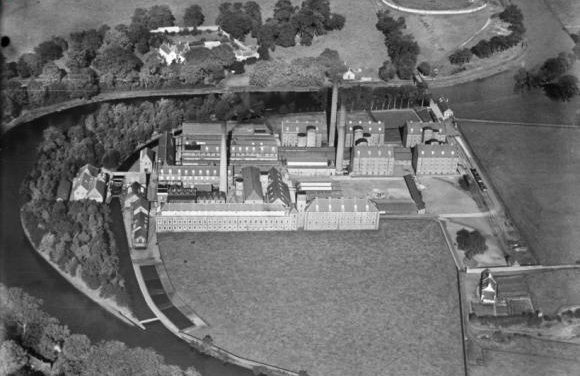
Dillichip Works as they were before the war
I met and made some good friends whilst at Bonhill. Two good friends to me were James and Connie McEwan whom I met at Alexandria Church. Connie came from Bolton in Lancashire so we had a lot in common. After demob I went up to Scotland to see them. By this time they had two children. The next time I went up there they had moved to somewhere in England so I lost touch with them.
Whilst stationed at Bonhill a new regiment was formed called Royal Electrical Mechanical Engineers, or REME for short. I, along with all other tradesmen was transferred into REME from the Royal Army Ordnance Corps in about late 1941. Of course when I arrived at Bonhill it was August 1941 and being under canvas wasn't too bad then, although by November it was getting very cold at night.
We had no proper water supply, just a spring which ran out of the rocks at the side of Dumbarton Road. We had to get water in our mess tins from the spring then run back to camp for a wash and shave. I remember there was a great big mirror in a wooden frame hanging from a tree with two ropes, which we used for shaving. There was no protection from the wind and rain, we just got washed and shaved in the rain with our capes on. We were all living in the same conditions , so just moaned and got on with it until we bad an epidemic of sore throats and had to gargle each morning with Condies Fluid, provided in buckets.
The cooks had to do all the cooking from the spring water at the side of the Dumbarton Road, so everything was pretty basic. We had to march down to our workshops every morning, about one mile away, then march back at twelve for dinner, march back alter dinner, finish work at 6pm and march back for tea. On dark mornings and evenings someone carried a clear glass storm lantern in front and someone carried a red painted glass storm lantern at the rear in order that vehicles did not mow us down. On top of this we had guard duty or fire picket at camp and workshops and all day Saturday was the same as every other working day.
Eventually, as sore throats worsened, a store shed at our works was cleared out and we were all billeted in there, which was snug, warm and dry, whilst a new camp of Nissan (sic) huts was built for us with proper washing and toilet facilities. This was in 1942.
There is another incident I remember well at Bonhill. Being tradesmen our job was to repair all vehicles, tanks, guns etc. and keep them on the move so we didn't get a lot of regimental exercise after our first month of infantry training, yet we were always told we were soldiers first and tradesmen after.
Unfortunately the workshop officers wanted the work turning out and the regimental officers wanted us to be soldiers. It was like serving two masters. On this particular occasion the regimental officers wanted about 40 men, so many out of each workshop, to go on a cross-country exercise. Whenever we got these regimental stunts it had to be in our own time, so it was always in the evening or on a Sunday, our day off. I was included in this stunt and had to parade at 8am on Sunday morning, properly dressed with webbing equipment, great packs, respirators on the alert (on our chests), rifles and steel helmets.
We were inspected on parade before setting off by Company Sergeant Major Fraser, a Scotsman, about fifty, with First World War medal ribbons. He was dressed the same as us, no rifle, although he had a revolver in his holster. After inspection we marched out of camp on the Sunday morning with the Sergeant Major in command. We marched down into Bonhill Village, over Bonhill Bridge over the River Leven, then straight through the main street in Alexandria and on to the village of Balloch at the foot of Loch Lomond. We were then halted in front of Balloch Park gates, which were of wrought iron, about 7 feet high and locked. We had probably marched about three or four miles, and there was hardly a soul about, after all it was Sunday morning. The milkman was delivering milk and the paper lads were on their rounds.
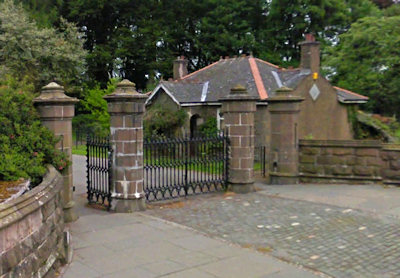 Sergeant Major Fraser tried the gates but they were locked alright. At the other side of the gates a park workman was sweeping the drive and the Sergeant Major Called to him to open the gates.
Sergeant Major Fraser tried the gates but they were locked alright. At the other side of the gates a park workman was sweeping the drive and the Sergeant Major Called to him to open the gates.
'I am not allowed to,' answered the workman, pointing to the notice board, which said, 'we don't open until eleven'. It was about 9 o'clock by then.
We were all stood to attention wondering what was going to happen when the Sergeant Major said, 'Look here my man. I want these gates open to bring these men through, regardless of your opening time.'
The workman said, 'I can't let you through, it's against the regulations.'
We were all listening wondering what was going to happen next. The Sergeant Major then said, 'Is the Park Superintendent about? If he is get him here.'
The workman then went to an office, which looked a bit like a lodge at one side of the gate and got the Park Superintendent out.
The Superintendent said, 'What can I do for you?'
The Sergeant Major replied, ‘I want these gates opened to bring these guards through.' He called us guards although we were only workshop soldiers, although I suppose we looked the part with rifles and steel helmets on.
The Park Superintendent replied that it was against the regulations. They were not allowed to open before 11 o’clock; it was on the notice board.
We were all enjoying the confrontation but Sergeant Major Fraser wasn't going to give up. He said to the Superintendent. 'This country is under martial law. I will give you twenty seconds to open these gates in the King's name, to let the King's men through. If you don't I will blow the bloody lock off, put you under arrest and march you back to barracks, escorted by two of these guards.'
We waited and wondered what he was going to use to blow the lock off as we hadn't a round of ammunition amongst us. Anyway the bluff worked. The Superintendent got the keys and opened the gates to let us through, and even though it was Sunday morning and our day off work. I'm glad I was there to see that bluff work. We went straight through the park, over the perimeter hedge and onto the hills, marching our way round back towards camp for dinner.
The story went round after this Sunday exercise and bluff that Sergeant Major Fraser had a bet on with another Sergeant Major that he would get a squad of men through Balloch Park before the gates were officially open, and he did it with fifty men to prove it. They are not the same gates now at Balloch Park but there are gates on with a notice board stating opening times. I have stood in front of them several times since then, remembering that Sunday morning with Sergeant Major Fraser addressing us as guards and bluffing his way through. I am sure by now that Sergeant Major Fraser will be on the great parade ground in the sky, where I am sure St Peter will have opened the gates for him.
I liked being at Bonhill and one of my workshop mates was a lad called Joe Lickerish, he was a Scot from Stirling. He married a local girl from Jamestown called Betty McPhearson [sic].
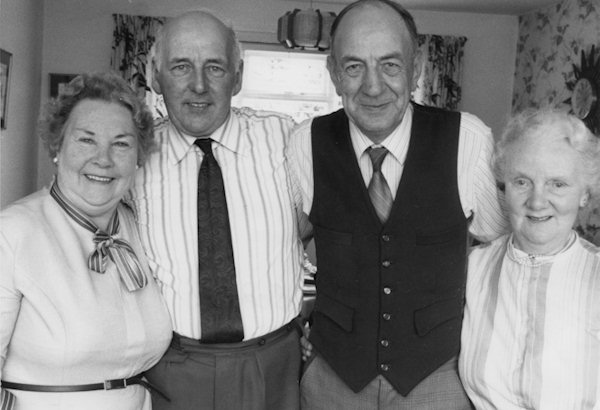
Betty Lickrish, Sylvester Till, Joe Lickrish and Dolly Till on one of Sylvester's visit to the Vale.
Sadly the day came. On the very day I was scheduled for ten day's home leave, when I was put an overseas draft and had to join 23 Workshop Company, REME, being mobbed up at Nottingham. I remember it well. Sergeant Fears, our shop NCO, told me to hand my tools in and get back to camp to collect all my kit, it was about 2.30pm, all rather a rush. I had to report to Sergeant Major Fraser to collect all my documentation, travel warrant, route to be taken, times of trains, etc. When I reported to him he said, 'I'm sorry about this laddie, you were going on leave today.'
Update
Since the above photo was first published we received an image from Tim Leader-Chew, whose father we think was also billeted at Dillichip. Tim provided the image below. In the background we can see the Torpedo Factory clock tower and other points of reference that suggest the photo was taken in the Dillichip area.

